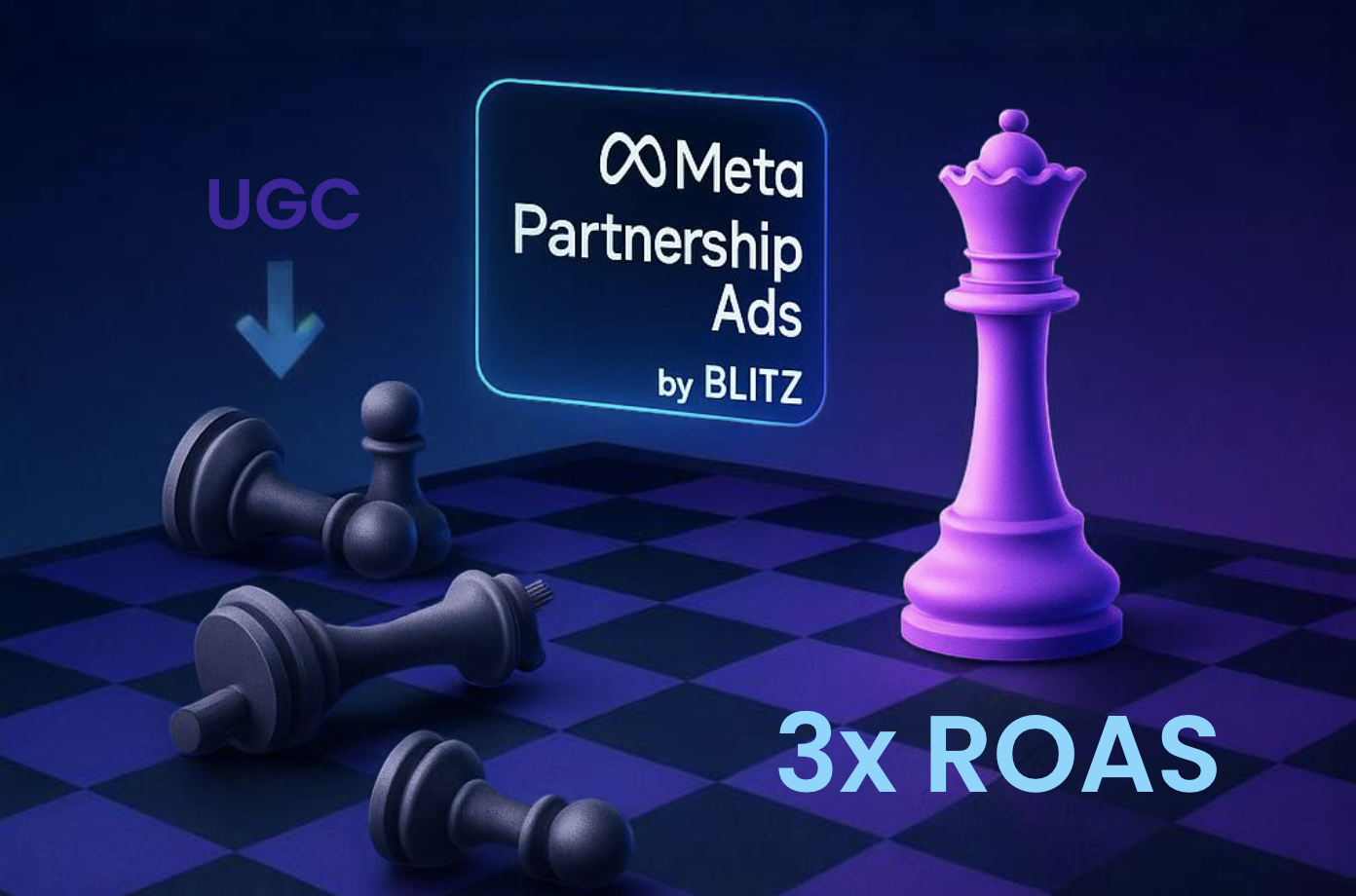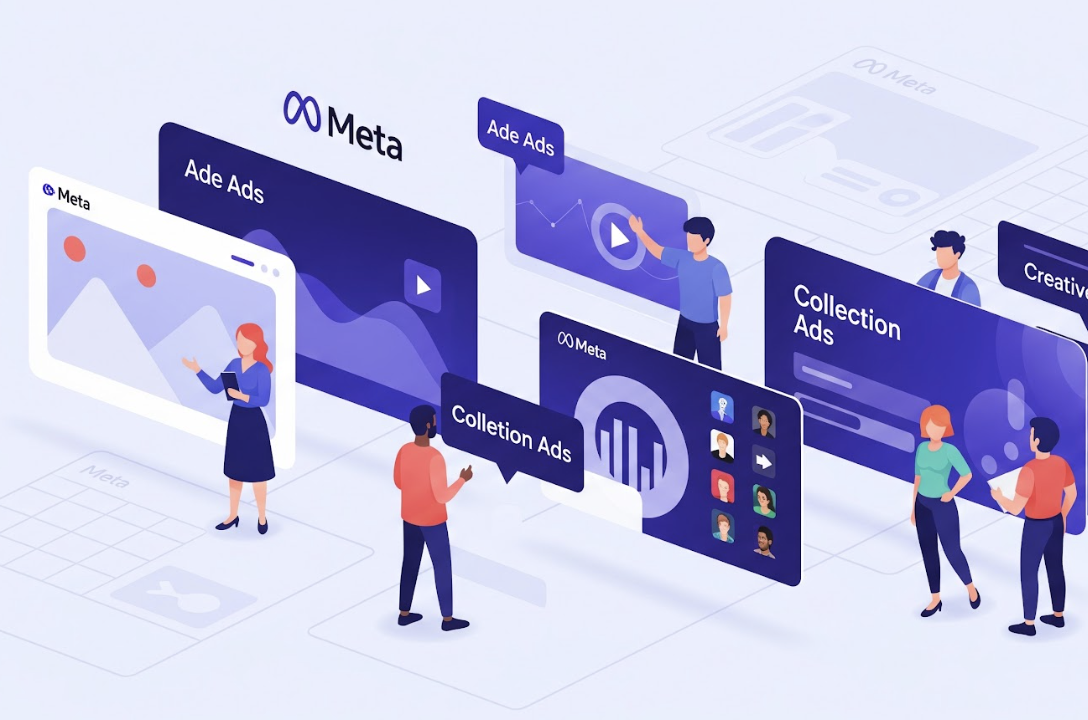Partnership Ads & Spark Ads: Why Creator-Handle Delivery Lifts Performance

TL;DR
- Running ads from a creator’s handle (Meta Partnership Ads, TikTok Spark Ads) consistently improves thumb-stop, CTR, and CPA versus the same concept from a brand handle.
- Gains come from native social proof, stronger trust/authority, and algorithmic signals (engagement history on the post/handle).
- Treat this like a performance channel: rigorous tracking, rights/usage windows, creative iteration, and budget rules.
- Common failure modes: weak briefs, no allowlisting rights, poor measurement, over-targeting, and single-angle fatigue.
Partnership Ads are the new UGC
User-Generated Content (UGC) used to feel real. A genuine review. A friend’s tip. But over time, UGC has become just another ‘branded’ ad: polished, scripted, and expected.
Partnership Ads are changing the game. Boosted from the influencer’s account and often low-fi, they have the potential to feel like genuine and real content to add the missing trust to your branded funnel.
What are Partnership Ads / Spark Ads?
- Meta “Partnership Ads”: your brand runs paid ads from a creator’s post or handle with the “Paid partnership” disclosure. You can boost an existing post or create dark partnership ads that never appear on the creator’s feed.
- TikTok “Spark Ads”: identical idea, your ad delivers as the creator using a post ID or authorisation code, keeping organic comments, likes, and watch time intact.
Key distinction vs. whitelisting/allowlisting:
Allowlisting is the permission the creator grants; Partnership/Spark is the ad format you run once permission is granted.
Why they work (and where)
- Native trust: Users treat creator handles as people, not brands → higher watch time and CTR.
- Borrowed authority: The creator’s audience + style lends credibility, especially in problem/solution categories (beauty, health, fitness, food, DTC staples).
- Social proof carry-over: Using the actual post preserves comments/likes, reducing friction in cold feed.
- Creative range: Lo-fi, first-person POV and UGC tropes feel platform-native; you can still mix in brand elements for clarity.
- Signal density: Posts with early organic traction often scale more efficiently when converted to ads.
Where they shine: prospecting, mid-funnel, launches, seasonal offers, objection-busting education.
Where brand ads still win: price/offer-led retargeting, product spec explainers, evergreen catalog and Shopping formats.
Set-up (high level)
Meta (Instagram/Facebook)
- Creator permissions: Creator adds your Page/Ad Account in Business Settings → Branded Content (or sends an ad authorisation).
- Choose asset: Boost an existing post or request a dark partnership asset.
- Build the ad: In Ads Manager, pick Partnership ad under Identity. Add UTMs, captions, and a clear CTA.
- Targeting: Go broad; add hard exclusions only (geo/compliance). Let creative do the targeting.
- Measure: Use CAPI + dedupe, consistent naming, and post-ID level reporting.
TikTok Spark
- Authorisation: Creator shares a code or enables the post for Spark.
- Ad creation: Select Use TikTok post → paste code/post link.
- Optimise: Conversion objective, broad targeting, lowest-cost bid; test hook-first 5 seconds.
- Measure: UTMs + TikTok Events API; track view-through carefully.
Creative that converts (brief your partners like this)
Forget fluffy scripts. What works is authentic storytelling, so keep its guidelines minimal and only ensure converting Ad logic principles are applied.
Ad structure:
- Hook (pull them in fast)
- Relatable Problem they had or Product Promise (can be part of the hook)
- Solution: your product
- Experience: incl. social/science proof
- Call-To-Action: what to do now
Format kit: 9:16 primary, safe-zones for captions/CTAs, subtitles on by default.
Angle matrix to diversify
- Social proof (reviews, “I switched from X…”)
- Education (how it works / ingredient explainer)
- Lifestyle (“day in the life” with product)
- Comparison (“ceremonial vs premium,” “before café vs at home”)
- Offer/urgency (bundle, subscription save, starter kit)
Ship 3–5 creators × 2–3 angles each to start; expect 1–2 evergreen winners and ongoing iteration.
Bottom line
Partnership Ads and Spark Ads turn creators into performance distribution, not just brand awareness. Treat them with the same rigor you apply to search or shopping: strong unit economics, systematic testing, rock-solid tracking, and disciplined scaling. Do that, and they’ll consistently lower CAC, expand profitable reach, and build moats your competitors struggle to copy.
evercleaner
Case study
- Revenue from $0 to $200k+ monthly within 18 months
- Significantly grew monthly customer acquisitions via Meta & TikTok
- Profitably scaled the Meta & TikTok ads budget from $5k monthly to $100k

Free Guide: The Proven Partnership Ads Playbook
The exact system we use to cut CAC by up to 70% and 2-3x ROAS. Backed by $3M/month in ad data.
.png)
%20(1).png)


.png)

.png)





